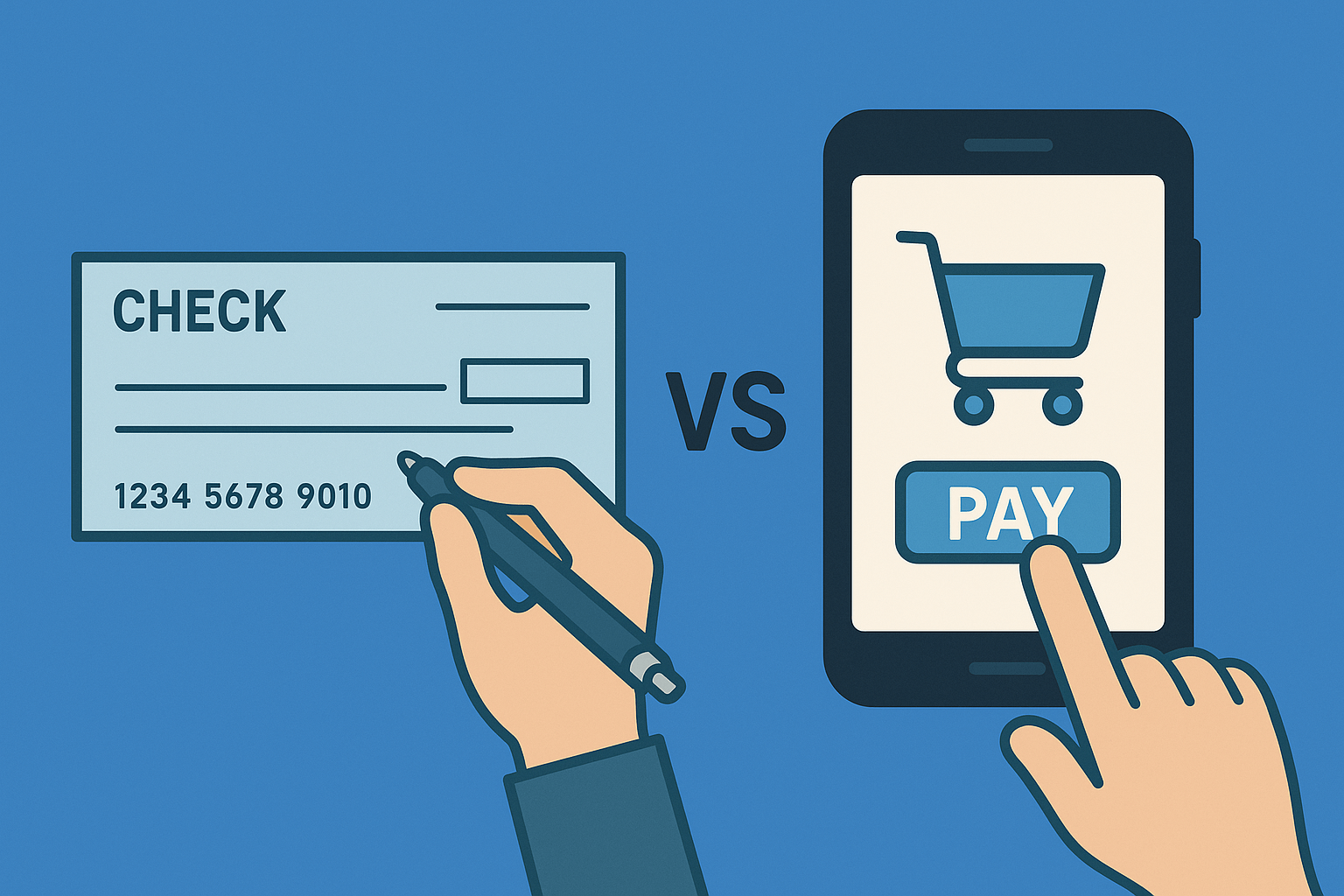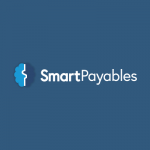Nowadays, businesses have more options than ever when it comes to making and receiving payments. Two of the most common methods are traditional check payments and modern digital payments. While each has its place, understanding the pros, cons, and security differences is essential for businesses looking to optimize their payment processes, reduce risk, and operate more efficiently.
Whether you’re holding on to checks for control or considering a switch to digital for convenience, let’s explore how these two systems compare — and what makes the most sense for your business.
What Are Check Payments?
Check payments involve the physical transfer of paper checks from a payer to a payee. Each check authorizes a bank to withdraw funds from the payer’s account and deposit them into the recipient’s. For decades, checks were the standard for business payments — especially for vendor invoices, payroll, and government disbursements.
Despite the rise of digital tools, checks are still in use today. In fact, many businesses continue issuing checks because they offer control, a clear audit trail, and compatibility with traditional accounting workflows.
Pros of Check Payments
Control and Visibility
For many businesses, especially those dealing with large or infrequent payments, checks provide a sense of control. You physically issue and mail the check, which offers a tangible record of payment.
Audit-Friendly
Checks leave a clear paper trail. The attached check stub can include payment details like invoice numbers and account coding, which simplifies reconciliation and audits.
Widely Accepted
Most vendors — especially small businesses and independent contractors — still accept checks. They’re universally understood and don’t require a recipient to have access to a digital payment platform.
Payment Timing Flexibility
Checks offer the ability to manage cash flow strategically. Since they take longer to process and clear, businesses can plan their outgoing cash more precisely.
Cons of Check Payments
Slower Processing Time
Mailing and clearing checks can take days or even weeks, especially with postal delays. This can slow down operations and create uncertainty for both payer and payee.
Higher Risk of Loss or Fraud
Physical checks are susceptible to being lost, stolen, or altered. Check fraud — including forgery and check washing — remains a serious risk. According to the AFP, check fraud was involved in 65% of all payment fraud attempts reported by organizations in 2023.
Manual Labor and Costs
Printing, signing, stuffing, and mailing checks involves significant manual effort. Plus, you incur the cost of check stock, envelopes, postage, and administrative time.
Data Exposure
Each check contains sensitive information such as the account and routing numbers, bank address, and company name — offering everything a fraudster needs to attempt unauthorized access.
What Are Digital Payments?
Digital payments, sometimes called electronic payments or e-payments, refer to money exchanged through digital platforms — typically with no need for paper checks or physical documentation. These include:
- ACH transfers
- Wire transfers
- Credit card payments
- Digital wallets and payment gateways
- Automated platforms like SmartPayables’ API-based check or ACH solutions
Digital payments are fast, convenient, and increasingly integrated with accounting and enterprise resource systems, allowing businesses to handle high volumes of transactions with ease.
Pros of Digital Payments
Speed and Efficiency
Digital payments are near-instant or settle within a few business days (ACH typically takes 1–3). This speeds up transactions and improves vendor satisfaction.
Automation and Integration
You can automate recurring payments, integrate with your accounting system, and eliminate manual entry. This reduces errors and streamlines your accounts payable and receivable workflows.
Enhanced Security
Digital payment platforms often include built-in fraud protection, two-factor authentication, encryption, and secure user access. You don’t have to expose sensitive bank information each time a transaction is made.
Lower Operational Costs
No need to buy checks, envelopes, or stamps — or spend hours reconciling payments. For high-volume payers, this can result in significant savings.
Real-Time Tracking
Most platforms allow for real-time payment tracking and confirmations, providing full visibility into when a payment is sent, received, or settled.
Cons of Digital Payments
Setup and Learning Curve
Initial setup can require some time and training, especially for businesses unfamiliar with digital platforms or integrating APIs. However, with a provider like SmartPayables, much of this process is guided and supported.
Vendor Adoption May Vary
Not all vendors are equipped to receive digital payments. Some may prefer traditional checks, particularly in industries where paper documentation is standard.
Fees for Certain Transactions
Some digital payment options, such as wire transfers or credit card payments, come with transaction fees. ACH is often lower-cost, but businesses must still account for platform or service provider charges.
Cybersecurity Risks
While generally more secure than physical checks, digital systems are not immune to cyber threats. Weak passwords, phishing attacks, or lack of encryption can put your payment data at risk if best practices aren’t followed.
Security Comparison: Checks vs. Digital Payments
Checks expose account and routing numbers to anyone who handles them — mail carriers, office staff, and even fraudsters who intercept mail. They’re also prone to alteration through check washing or forgery. While features like watermarks and microprinting help, checks remain a common entry point for fraud.
Digital payments, on the other hand, benefit from encryption, login credentials, IP filtering, and user-based access controls. Platforms like SmartPayables even offer Positive Pay integration, which adds an extra layer of protection by matching issued payments to cleared payments at the bank level. This makes it significantly harder for fraud to slip through undetected.
Which One Is Right for Your Business?
The best choice depends on your business size, payment volume, vendor preferences, and need for control vs. efficiency. In reality, many businesses benefit from a hybrid approach — continuing to issue checks for specific vendors or use cases while automating the majority of payments digitally.
If your company handles a large number of recurring or high-volume payments, digital automation is likely the smarter, more secure choice. If you still rely on checks for payroll, refunds, or vendor payments, using a secure check printing and mailing service like SmartPayables can keep you compliant and protected while reducing your workload.
The Smart Way to Pay Is Secure, Flexible, and Scalable
Both check and digital payments have their strengths — and their risks. Checks offer visibility and control but come with slower processing and higher fraud exposure. Digital payments offer unmatched speed, security, and efficiency but require proper setup and security measures.
The smart move? Choose a partner that supports both. SmartPayables provides secure, compliant check printing and mailing services, along with automated digital payment solutions like ACH and API integrations — all designed to keep your business safe, scalable, and streamlined.
Ready to modernize your payment process without losing control? Contact SmartPayables today to explore secure solutions that fit your business needs.
Founded in 2005, Smart Payables offers a full range of accounts payable payment solutions including outsourced check printing and mailing, document and statement printing and mailing, ACH direct deposits + more. Our highly experienced software developers and intelligent printing teams specialize in secure, enterprise-grade payment options that are HIPAA, SOC 1 Type 2, and ISO compliant. Our mission is to help businesses and large organizations implement secure, innovative technology that will reduce overhead and improve business operations and capabilities.


